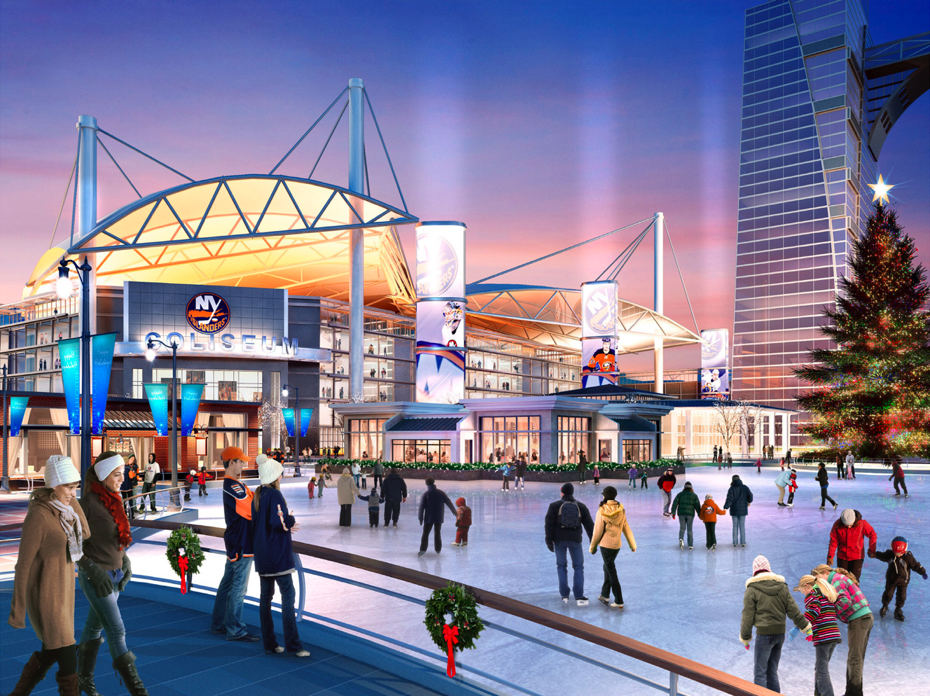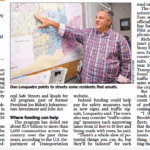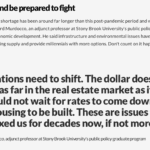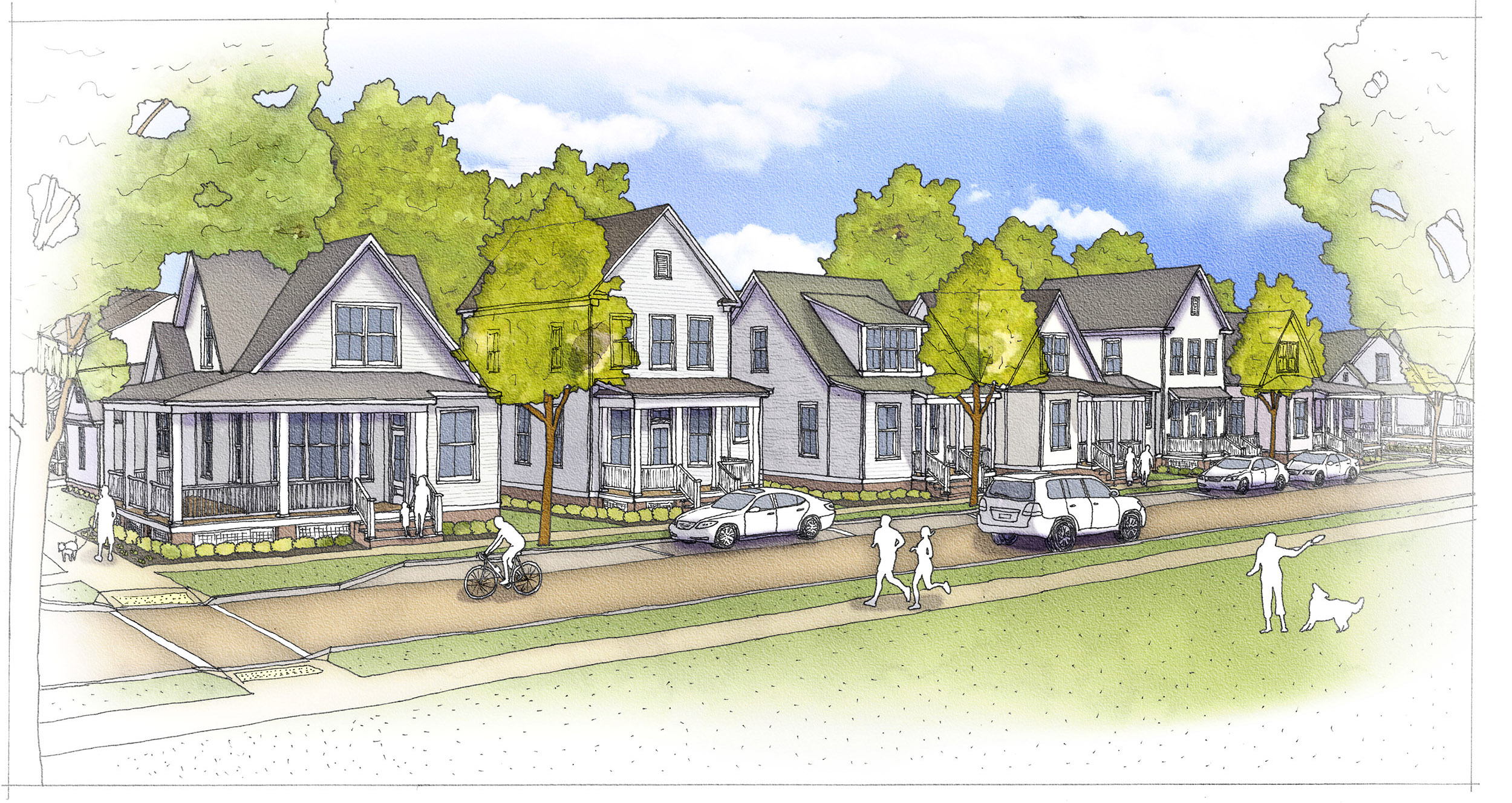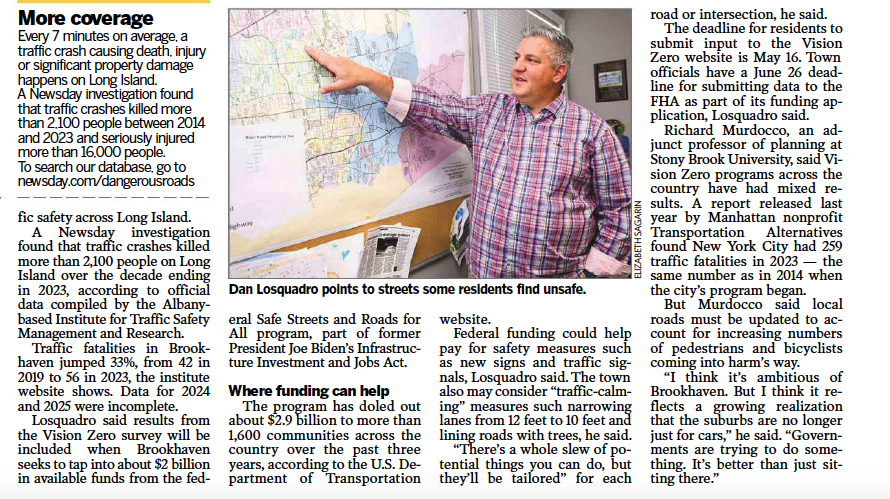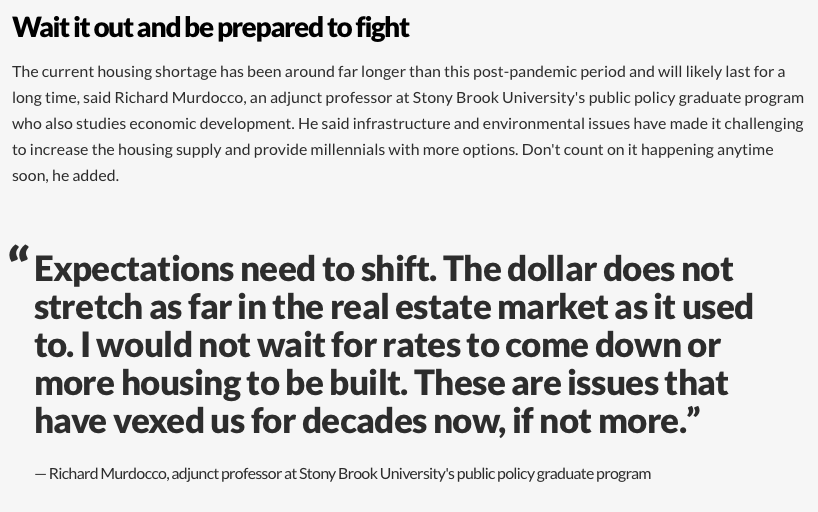The following was first published exclusively by The Foggiest Idea on September 15th, 2018. Interested in supporting The Foggiest Idea’s award-winning reporting and analysis? Click here.
By Richard Murdocco
After decades of broken promises, broken hearts and false starts, the land surrounding the Nassau Coliseum may at last get the development that county policymakers have long craved.
According to Newsday, the latest proposal for the Nassau Hub site is a $1.5-billion project that calls for 500 units of housing, 600,000 square feet of office and biotech research space, 200,000 square feet of “experiential retail,” 3,400 parking spaces, rapid transit links to both the Mineola and Hempstead LIRR stations, and two new pedestrian bridges.
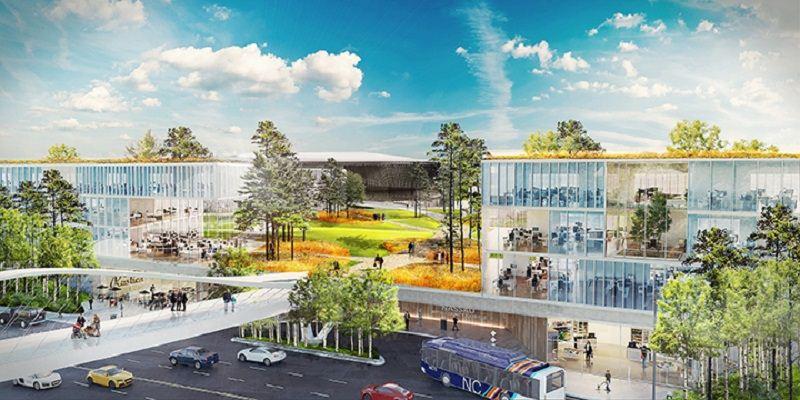
A rendering of the latest development proposal at the Nassau Hub, as of September 2018. Credit: Nassau County
At the helm are both Uniondale-based RXR Realty and Brooklyn-based BSE Global, which operates NYCB Live’s Nassau Coliseum and the Barclay’s Center. What they propose is being pitched as-of-right because all the planned growth would still conform to the Town of Hempstead’s zoning for the site, so no additional variances would be needed by the developer.
Nassau County Executive Laura Curran, a Democrat, gushed about it. “This is the first time, in the 20 years I’ve lived in Nassau County, that we can move forward on real development at the Hub,” she told Newsday.
Despite the hype, other county lawmakers’ initial reaction to the proposal was not overwhelming enthusiasm.
Both Republican Richard Nicolello, the Nassau County Legislature’s presiding officer, and Democratic Legis. Siela Bynoe, who has represented the area since winning a special election in 2014, have expressed varying degrees of cautious optimism in their comments to the media. Neither legislator responded to numerous requests from The Foggiest Idea to elaborate.
Respecting current zoning for the 72-acre site does make this project more realistic than past ideas. It also has backing from institutions such as Mount Sinai Health Network, which is interested in locating a 100,000-square-foot biomedical research facility there. All that seems to be needed is some state financing to provide the final burst of momentum necessary to finally get shovels in the ground.
From a regional standpoint, the proposal could be sound. As with any large-scale project, policymakers must consider the other huge redevelopments that are being proposed or are already underway in the area. Five miles north is Syosset Park, a sizable mixed-use proposal encompassing 625 town houses and condominiums, two hotels, a 30-acre park, stores, offices and restaurants. The parcel along the Long Island Expressway is a former town landfill (a cleaned-up federal Superfund site) as well as a town public works complex. In Hicksville, Heritage Village is a mixed-use complex of almost 600 apartments, retail stores and 5 acres of green space that would replace the former Sears department store on North Broadway. Other ambitious ideas are still being fleshed out but they loom large—and their potential impact can’t be ignored.
Thanks to the biomedical uses being pitched for the new Nassau Hub, the vision here is different. It goes beyond the developmental concepts that developers have relied on to create what they all too generously call “live, work, play” projects.
It is concerning that Nassau County politicians are reportedly leaving themselves an out so they don’t have to formally climb on board in support of the big project. But their wishy-washy caution could be more of a sign that they are waiting to know which way the public is leaning rather than their having any misgivings over the proposal’s merits.
This sea of asphalt in Uniondale has shipwrecked many ideas in the past, the most high-profile one being Charles Wang’s $3.8 billion Lighthouse Project. The public got its first glimpse at a September 2004 news conference. It called for a renovated Coliseum for the Islanders, which Wang then owned, as well as 2,306 units of housing, 1 million square feet of office space, and 500,000 square feet of retail. The ambitious vision to transform 150 acres at the site and the surrounding area “into Long Island’s signature destination” included a Grand Canal, a Celebration Plaza, and the gleaming double towers of a five-star luxury hotel soaring 60 stories above the Hempstead Plains.
But the hoopla had hardly died down when the project was being scaled back to overcome mounting opposition. The hotel towers began shedding floors—the number was soon down to 35—and the “10-13.5 million square feet” for development shrank to 5.4 million square feet as the slow and torturous approval process dragged on. Six years after the concept was first launched, the Lighthouse had gone dark. Supporters of Wang were quick to point fingers. Some blamed Republican Hempstead Town Supervisor Kate Murray for not wanting any apartments in the Hub because they’d be occupied by Democratic voters. The delays and stalling tactics were considered remarkable, even for Long Island. “I mean, we’re talking about an asphalt wasteland,” former Suffolk County Executive Pat Halpin told Newsday in 2009, the peak of Lighthouse-mania.

The July 2011 cover of the Long Island Press, featuring a mock-up of both Mangano and Wang, during the height of the coliseum referendum debate.
Left in the wake were the Town of Hempstead’s restrictive zoning rules that RXR and BSE promise to abide by today. As a last ditch effort to help the Islanders play in a revamped Coliseum without having to fork over any county cash, then-Nassau County Supervisor Ed Mangano, a Republican, proposed that Nassau taxpayers finance a $400 million referendum to pay for it, and in turn, keep the Islanders playing in Uniondale. The referendum had the backing of construction unions, hockey fans and politicians but not the overburdened taxpayers who came to the polls on a hot summer day in 2011 to ice the deal. Shortly after the ballot measure’s defeat, the team’s owners announced that the Islanders would be heading for Brooklyn.
Today, the Islanders are still skating at Barclay’s Center. But they’re a team on the move. Belmont Park is slated to become their home once their new arena is finished. In the meantime, they’re expected to play in Uniondale at the revamped Nassau Coliseum, the product of private investment by BSE with a dash of state-supported funds and $10 million in tax breaks from the Nassau County IDA to ensure that the venue is suitable for the NHL. Next season the Islanders have agreed to play a dozen games at the Nassau Coliseum and 48 more “home” games there over the following two years.
Moving the Isles back to the Island was seen by policymakers as a win for Long Islanders. But this planner remains skeptical. Arenas aren’t known for bringing strong economic returns to their surrounding communities, and the additional taxpayer subsidies could be invested more wisely elsewhere.
Regardless, something must be done at the Nassau Hub. As the master planner emeritus Lee Koppelman once told the Long Island Press, “It’s not a rural enclave by any means. It’s probably one of the most urban areas in the entire Nassau-Suffolk region.” This latest proposal seems to be the most realistic attempt to redevelop the acreage around the Coliseum.
Two factors are sure to help this vision come to fruition: Nassau County officials are ensuring that everything is entirely as-of-right within the Town of Hempstead’s zoning for the site and RXR is staying involved. This company is well connected politically, and it has ample experience building in New York. Scott Rechler, chairman and CEO of RXR, was appointed by Gov. Andrew Cuomo to sit on the MTA board in June 2017, a role he readily embraced. Rechler is also the chairman of the Regional Plan Association, and regularly chimes in on Long Island’s developmental debates. Needless to say, if any firm can get its way at the site, it’s RXR.
As such, it is highly likely this effort will move forward, but that doesn’t mean the road ahead will be easy. The project still needs to undergo the state-mandated environmental review process, which can take a lot of time even under the best conditions, and community outcry could always turn local policymakers’ spines to jelly.
The fact is, Long Islanders have waited decades to see signs of progress at the Nassau Hub. What’s another year or two of review in a saga that rivals the time that has passed since the Islanders last hoisted the Stanley Cup in victory?
Richard Murdocco is an award-winning columnist and adjunct professor in Stony Brook University’s public policy graduate program. He regularly writes and speaks about Long Island’s real estate development issues. More of his views can be found on thefoggiestidea.org or follow him on Twitter @thefoggiestidea. You can email Murdocco at Rich@TheFoggiestIdea.org.

